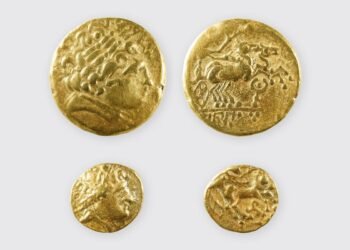A British World War II submarine, HMS Trooper, which vanished during a secret mission in 1943, has been discovered off the coast of Greece, solving an 81-year mystery.

The submarine, lost with all 64 crew members, including Australian volunteer Lt. John Stuart Ryder, was found at a depth of 830 feet (252 meters) in the Ikarian Sea between Ikaria and Kos islands. The wreck, discovered by the Greek deep-sea research company Planet Blue, is broken into three sections—the bow, middle, and stern—indicating a violent sinking caused by a German mine.
HMS Trooper was on a secret mission to patrol between Donoussa islet and Ikaria after British intelligence warned of a potential German landing on the island of Leros. It failed to return to the port of Beirut on October 17, 1943, and was declared lost, with the crew presumed dead. Subsequent searches, beginning in 2000, spanned 14 missions, none of which yielded results until the recent discovery by Kostas Thoctarides and his team from Planet Blue.
Thoctarides, speaking to Live Science and Greek news agency ANA-MPA, explained that his team located the wreck on October 3, 2024, after using shipboard sonar to create a detailed map of the seafloor, followed by a remotely operated vehicle (ROV) to inspect the wreckage. Thoctarides noted the wreck had been missed in earlier searches because previous expeditions focused too far east. He also emphasized the challenging nature of the Ikarian Sea, known for its harsh weather conditions, strong winds, and powerful underwater currents.
The submarine’s sinking is believed to have been caused by a mine laid by the German mine-sweeper Drache just days before the incident. Thoctarides’ research determined that HMS Trooper had likely struck one of these mines, leading to the massive explosion that tore the vessel into three parts. The stern of the submarine, the least damaged section, remains largely intact, measuring 106 feet (32.5 meters) in length.
Images captured by the ROV show the sub’s conning tower hatch partially open, suggesting it was on the surface when the explosion occurred. The wreck is a designated war grave, and no disturbances were made to the site, allowing it to serve as the final resting place for the crew members.
The discovery brings long-awaited closure to the families of those lost on HMS Trooper. Richard Wraith, a captain in the Royal Navy and son of the sub’s commander, Lt. John Wraith, expressed his relief at the news. “I have known for many years the painstaking effort of the search team to locate the wreck of the submarine, and now I am very pleased and excited that their efforts were rewarded,” he told ANA-MPA. He added, “I hope that the family members of those lost along with my father will be able to use the Trooper’s definitive status as a reference point to help lay their loved ones’ memories to rest.”
HMS Trooper, a T-class submarine, was launched in 1942 and played an active role in World War II. Its first mission, Operation Principal, involved the use of human torpedoes to sink Italian ships in Palermo harbor. Its final mission began on September 26, 1943, as it was sent to patrol near the Dodecanese islands. Although it was initially thought that the sub had been sunk by a German Q-ship, later research confirmed that the submarine attacked in that incident was HMS Torbay, not Trooper.























